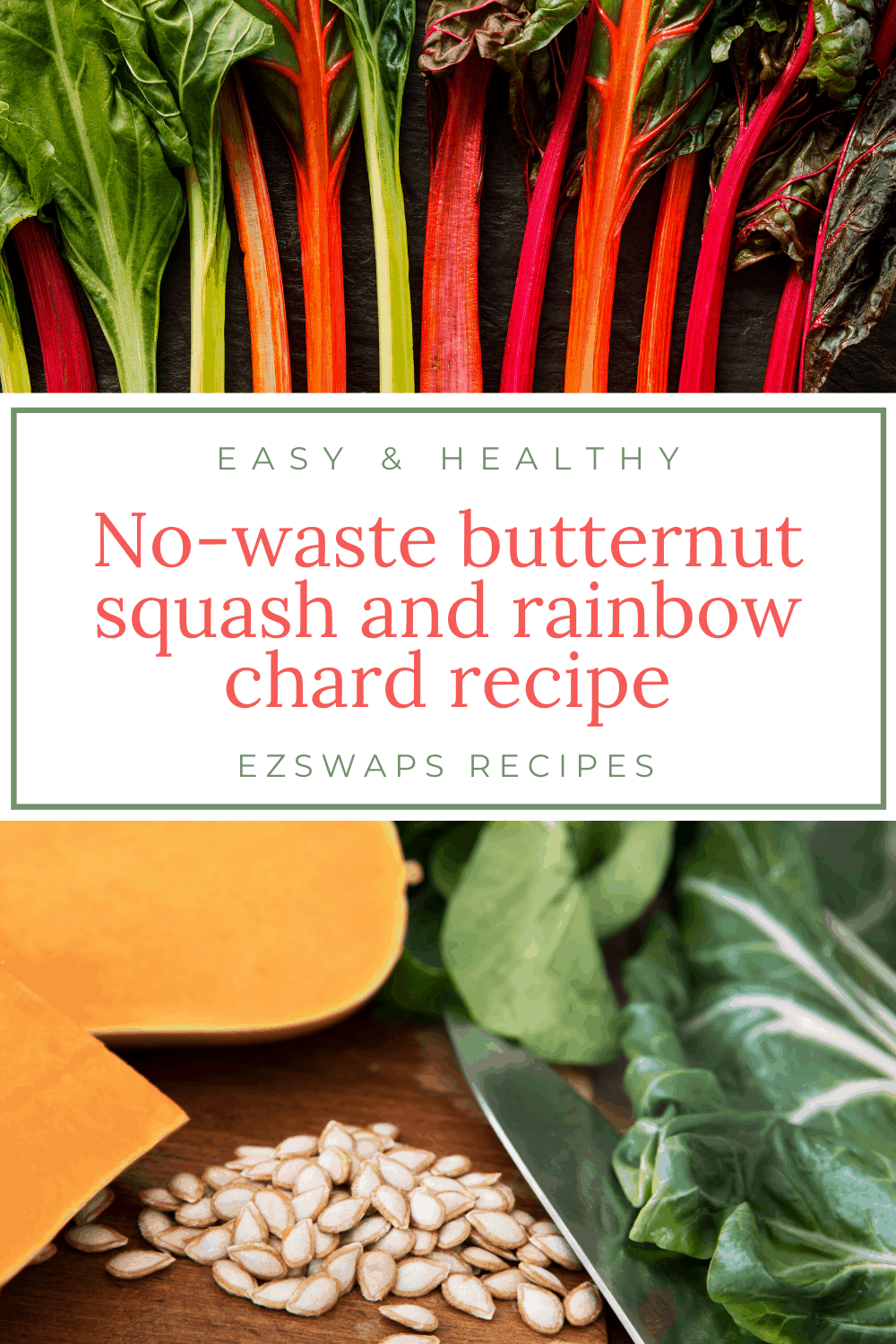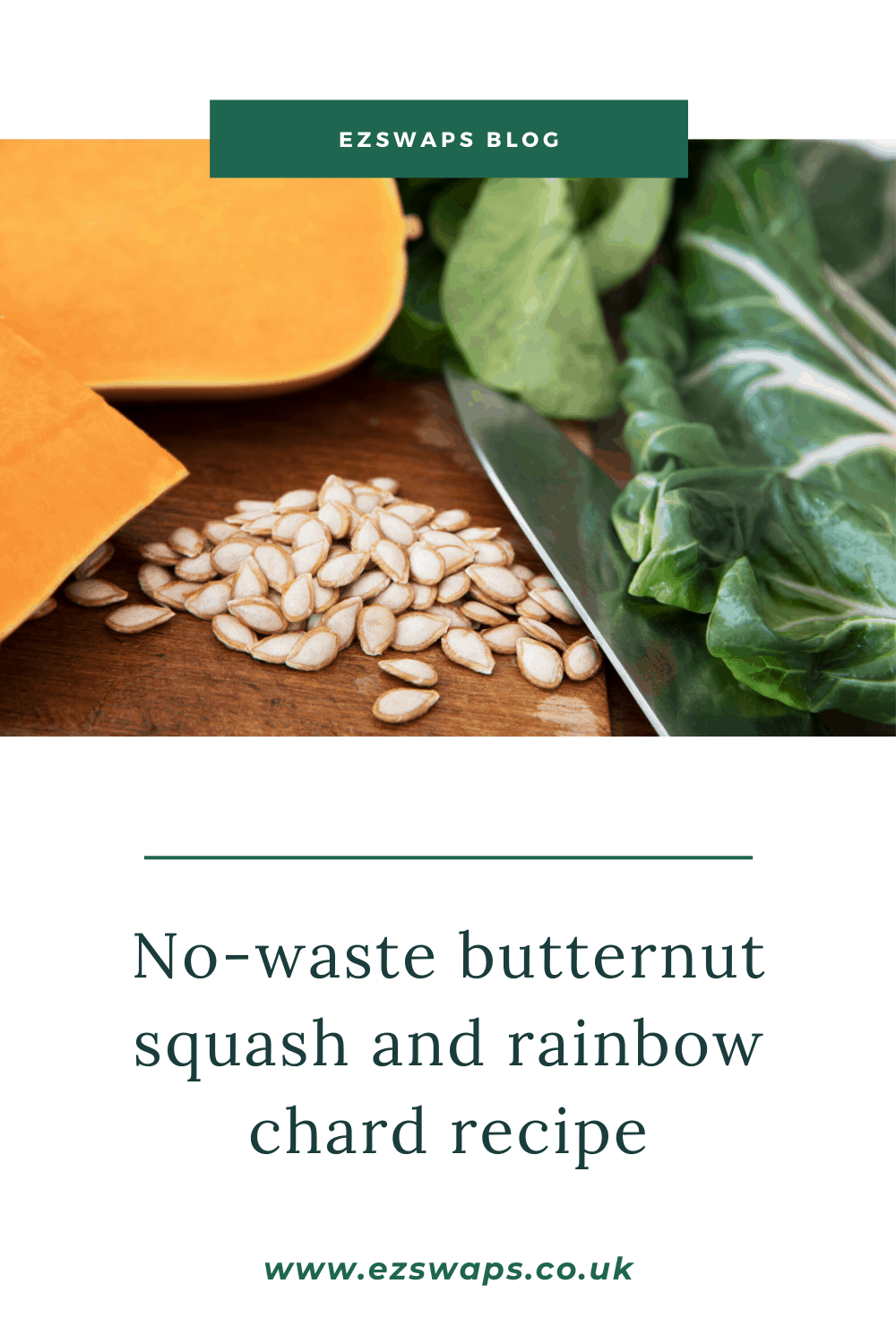Deprecated: mb_convert_encoding(): Handling HTML entities via mbstring is deprecated; use htmlspecialchars, htmlentities, or mb_encode_numericentity/mb_decode_numericentity instead in /home2/ezswapsco/public_html/wp-content/themes/pipdig-etoile/inc/functions/inc/functions/pinterest_hover.php on line 36
Reading Time: 5 minutes
In a quest to eat more greens, you might be wondering: what’s “chard” and what’s the best way to cook it?
Chard or Swiss chard or rainbow chard – up until a year ago I had never cooked this wonderful vegetable, but last year this all changed, and now I can’t get enough!
As you might have read in this previous post, in 2019 I subscribed to wonky veg saviours Oddobox. The fun thing about this vegetable box is you never know what’s going to be in it! It’s always a surprise, and the great thing about it is that it contains produce that would have otherwise gone to waste, having not fit supermarket standards.
One day, the box arrived with a bunch of very colourful rainbow chard in it, leaving me confused as to what to do with it… so if you are like I was, new to this vegetable, let me explain a little bit about it.
What is Swiss/rainbow chard?
Swiss chard is part of the same family of vegetables as beets and spinach. It has a sturdy stalk and broad leaves that are darker towards the top. The stem can be different colours, from white or yellow to hot pink or red, hence why it’s also known as rainbow chard.
What part of rainbow chard is edible?
The leaves and stalk are both edible, but they cook at different rates, so I would advise to cook them separately.
What does rainbow chard taste like?
If you eat it raw, the leaves taste a bit like a milder version of adult spinach leaves, while the stems are a little tart. Older chard tends to be less bitter than young chard.
However, I prefer to cook it, which is why I’m writing this post. I want to share with you a recipe that I find delicious!
How should I cook chard leaves?
There are lots of different ways to cook chard. My favourite way to cook chard is with butternut squash. I will get into the step-by-step details below, but essentially, you caramelize the butternut squash in a pan, then add in the chard leaves.
Sweet, tangy, and creamy things help temper the slight bitterness of the chard, and I think the butternut squash does this perfectly.
How should I cook the stem of the chard?
Chop up the stem in roughly 2cm pieces and toss them with some extra virgin olive oil and salt in a baking tray, before putting them in the oven until the stems are crispy and begin to brown (full recipe instructions below).
How to prepare rainbow chard
- First, thoroughly rinse both the leaves and the stems of the chard. They can both hold a lot of dirt.
- Fold the chard in half lengthwise, so that the leaves overlap each other and lay it in front of you on a chopping board. You should have the stem facing one way and the edges of the leaves the other way.
- With a sharp knife cut along the edge of the stem.
- Repeat with all the remaining leaves.
- If necessary, chop the leaves in half and in half again.
Now you should have a bunch of chard stems and a pile of chard leaves. As mentioned above, they have different cooking times and will be cooked in different ways in this recipe.
3 easy no-waste recipes – butternut squash with rainbow chard

Ingredients
- a bunch of Swiss/rainbow chard
- a medium butternut squash
- extra virgin olive oil
- salt
1. Method for butternut squash and chard leaves
- Wash the butternut squash and pat it dry with a towel.
- Peel the butternut squash in long strips of skin. I love my Chef’n Palm Peeler – it makes it really easy to peel any vegetable and it’s comfortable to hold.
- Don’t throw away the butternut squash peels; keep them aside for now.
- Cut off the seeds end and slice the squash into cubes of roughly the same size. Don’t throw away the seeds and keep those aside too.
- Add a little extra virgin olive oil to a pan on medium-high heat. Wait for it to warm up, then add the cubes of butternut squash and sprinkle in a little salt.
- Cook, stirring occasionally, for about 10 minutes. The pan should be hot enough to get the squash fairly brown before you add the chard leaves.
- While the butternut squash is cooking, follow the instructions above on how to prepare rainbow chard.
- Add the washed and wet rainbow chard to the pan and cover it with a lid. Cook for about 5 minutes, giving it a stir every minute or so.
- Make sure the squash and chard are fully cooked. If not give everything a few more minutes. In 15 minutes it should be beautifully caramelized.
2. Method for roasted butternut squash peel and seeds
- Preheat the oven to 135C/275F. Get two baking trays. Line a baking sheet with a silicone mat or parchment paper or aluminium foil, whichever you tend to use in your home.
- After removing the seeds from the squash, rinse with water, and remove any bits of squash. Pat dry, and place in a small bowl with some extra virgin olive oil and salt until the seeds are evenly coated. Spread out in an even layer on the prepared baking sheet.
- Bake for 15 minutes, or until seeds start to pop. Remove from oven and cool on the baking sheet before serving.
- Place the butternut squash peelings in the other roasting tray and brush with extra virgin olive oil, and place in the oven to cook for 20 minutes on a low heat to crisp up.
- Remove the crisps from the oven and place on kitchen paper to absorb any excess oil.
3. Method for the chard stems
- Once those are done, increase the oven temperature to 190C/375 F.
- Follow the instructions above for preparing the chard, making sure you pat the stems dry.
- Toss the chopped up stems in a baking pan in more or less a single layer. Lay stems in the pan, drizzle with remaining oil and sprinkle with salt. Cover the pan with foil.
- Put in the oven and bake 10 minutes; then remove the foil and bake until chard stems are tender and start to brown, about 20 more minutes. Serve hot, warm, or at room temperature.
So as you can see, rainbow chard is not only delicious, it’s versatile too…and none of it goes to waste! This easy side goes well with any simple meat/fish dish or any meal actually. The butternut squash seeds can be a tasty afternoon or mid-morning snack.
If you’ve tried this recipe let me know what you thought of it in the comments below. Make sure you pin this on Pinterest so you can get back to it easily!

